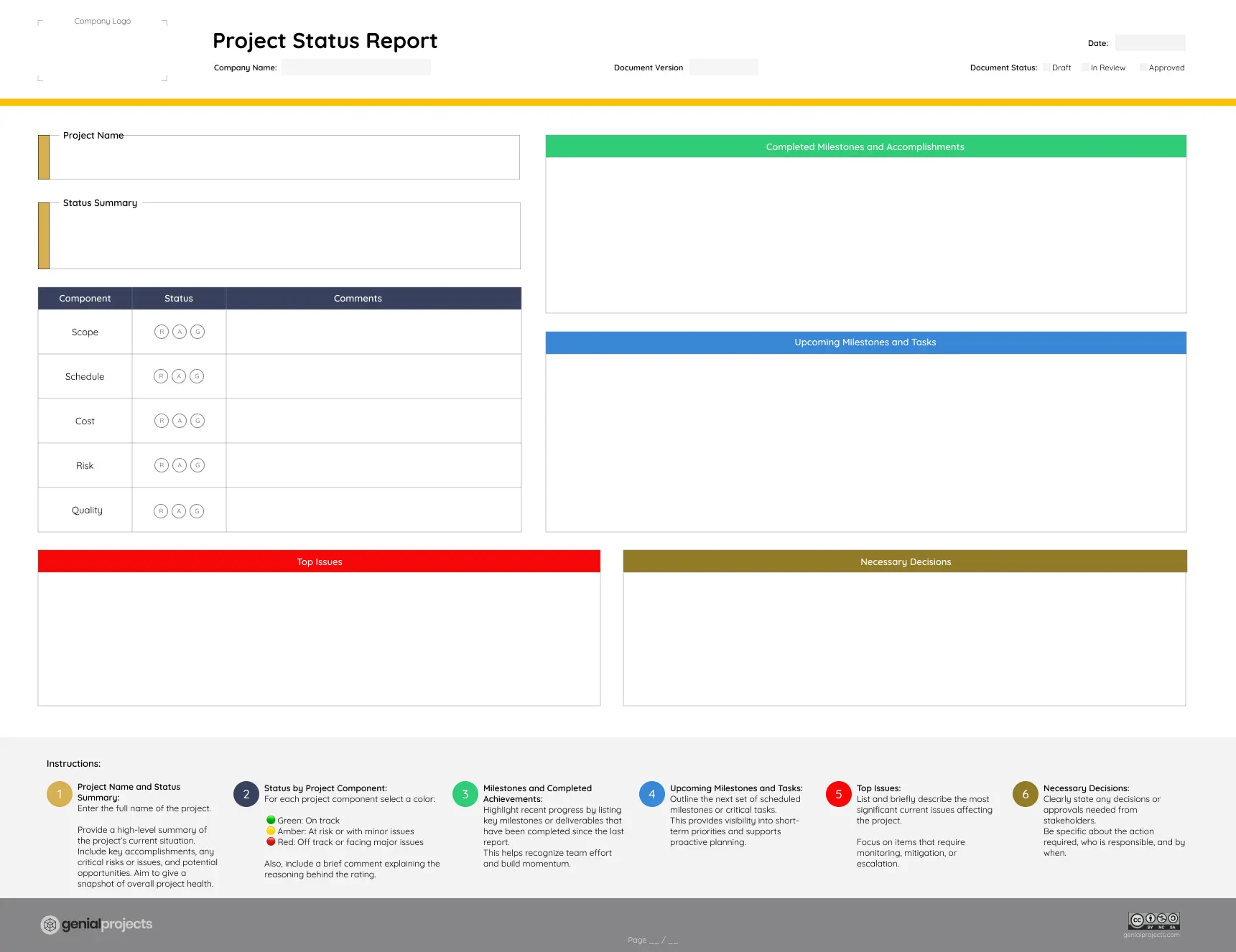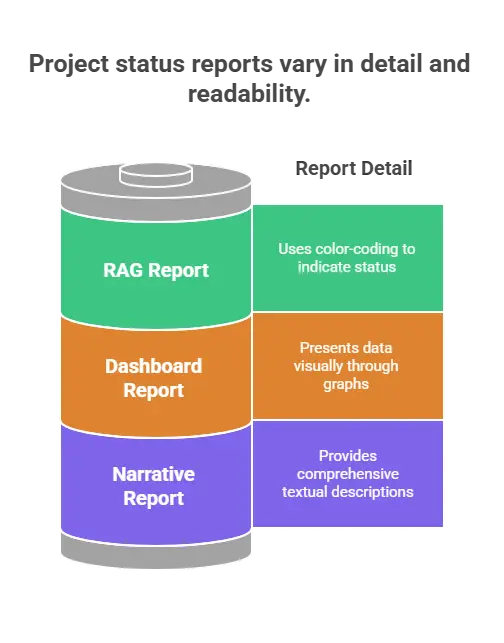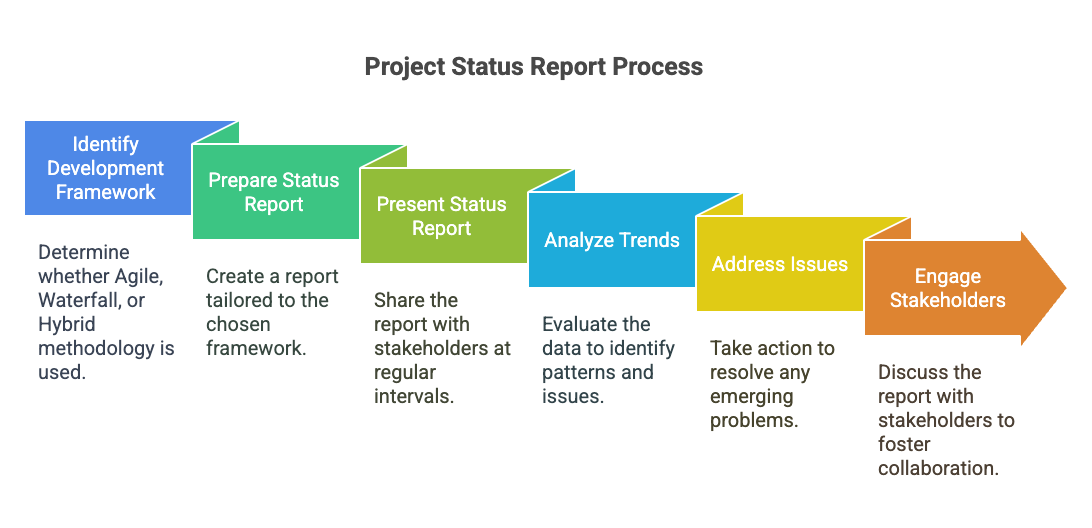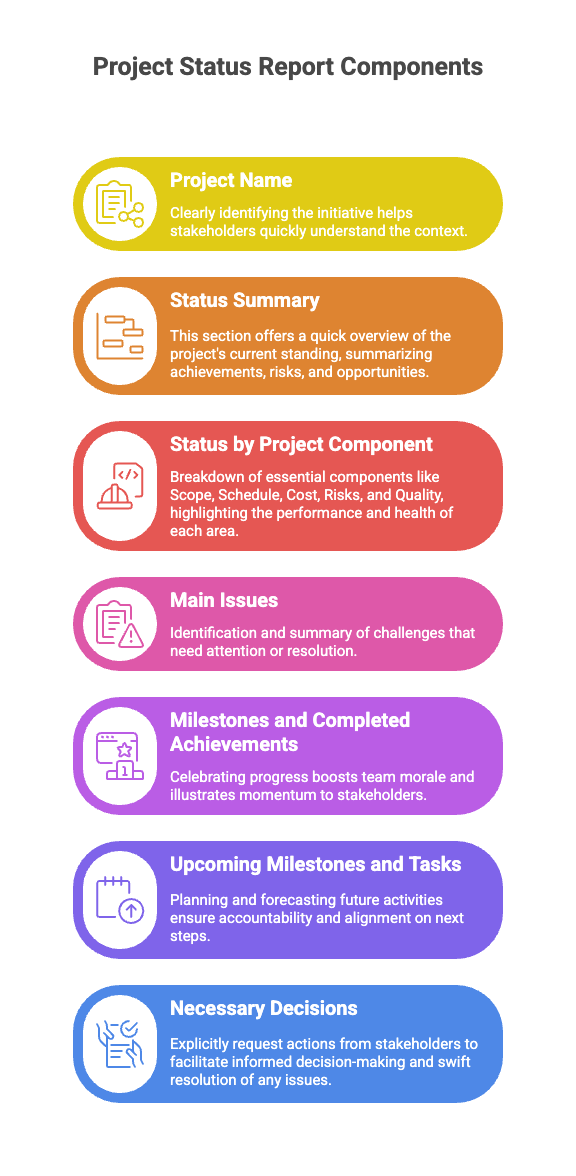Amidst the rapidly evolving technological environment of today, effective project management is crucial for the success of any initiative. A key component of maintaining control over a project is the implementation of a Project Status Report (PSR). This critical document not only serves to communicate information but also to facilitate significant decisions that drive the initiative towards its goals.
A well-structured Project Status Report provides stakeholders with an essential understanding of the project’s current state, enabling them to identify potential risks, acknowledge achievements, and plan for future tasks. This article will explore the importance of the Project Status Report during the execution phase, providing insights into its essential components and how it can be tailored to various development frameworks. We aim to empower project managers, leaders, and executives with the knowledge needed to effectively utilize this tool.
What is a Project Status Report?
A Project Status Report is a formal document that outlines the current state of an initiative and its key components. Its primary purpose is to convey timely information regarding progress, enabling stakeholders to make informed decisions and address any obstacles that may arise. The report encapsulates various aspects of the initiative, such as scope, schedule, costs, risks, and quality, offering a comprehensive snapshot that brings the team and stakeholders up to speed.
The significance of the Project Status Report lies in its ability to maintain transparency throughout the project lifecycle. It serves as a communication bridge between team members and stakeholders, ensuring that everyone is aligned with the project's goals and updates. By regularly assessing the project's status, project managers can identify trends, predict potential challenges, and adjust strategies accordingly, further enhancing their project's likelihood of success.

Free Project Status Template
Plantilla de Estado de Proyecto gratis
Types of Project Status Reports
In the industry, several types of Project Status Reports exist, each tailored to different needs and circumstances. The most common types include narrative reports, dashboard reports, and RAG (Red, Amber, Green) reports.
Narrative reports provide comprehensive textual descriptions of a project's status, challenges, and accomplishments. While they offer detailed insights, they can be time-consuming to prepare and may overwhelm busy stakeholders with excessive information. Dashboard reports, on the other hand, present data visually through graphs and charts, allowing for quick assessments of KPIs. However, they may lack the depth required for a thorough evaluation. RAG reports use a simple color-coding system to indicate the status of various components — Green for on track, Amber for caution, and Red for at risk. While they provide a snapshot of the initiative's health, they often require more context to facilitate informed decision-making.

The Usefulness of the Project Status Report in Different Development Frameworks
The Project Status Report finds its application across various development methodologies, each adopting a slightly different approach based on its principles. In Agile methodologies, for example, frequent and concise reports are crucial because they foster adaptability and continuous improvement. Agile teams may utilize daily stand-ups combined with a bi-weekly or monthly report that captures key metrics, lessons learned, and areas for improvement.
Contrastingly, in traditional methodologies, such as Waterfall, status reports tend to be more formal and structured. These reports might be generated at specific milestones, providing a comprehensive update on progress against the predetermined plan. Hybrid methodologies blend elements from both Agile and traditional frameworks, often requiring a flexible approach to status updates. Regardless of the framework, it is vital that the Project Status Report is adaptable and reflects the project’s current context and stage.
The Project Status Report During Project Execution
During the execution phase of a project, timely and relevant status reports are of paramount importance. It is essential to present a status report at regular intervals, typically aligning with project sprints or milestones. This practice ensures that all stakeholders are kept informed and can make decisions based on the most current data available.
The frequency of status reports can vary, but they should generally be provided at least bi-weekly or monthly, depending on the project's pace and complexity. The key to leveraging the information presented in these reports lies in analyzing trends, understanding patterns, and promptly addressing emerging issues. By engaging stakeholders through dialogue around the report, project managers foster a collaborative environment that empowers the team to stay aligned with the project objectives.

Who Prepares the Project Status Report in Agile Development?
In Agile environments, the responsibility for preparing the Project Status Report typically falls on the entire team. Collaboration is at the heart of Agile, and each team member contributes to the report based on their area of expertise. This collective effort helps ensure that the information is accurate and comprehensive.
The Scrum Master plays a pivotal role in facilitating this process. As the team's guide, the Scrum Master ensures that the report reflects the current state of the sprint and aligns with Agile principles. In other frameworks, such as Kanban or Lean, roles may vary, but the collaborative essence remains consistent. Ultimately, fostering a culture of shared accountability enables the team to produce a robust and valuable Project Status Report.
Most Important Components of a Project Status Report
A well-crafted Project Status Report comprises several critical components, each serving a unique purpose that ultimately contributes to the report's effectiveness.
- Project Name: Clearly identifying the initiative helps stakeholders quickly understand the context.
- Status Summary: This section offers a quick overview of the project's current standing, summarizing achievements, risks, and opportunities.
- Status by Project Component: Breakdown of essential components like Scope, Schedule, Cost, Risks, and Quality, highlighting the performance and health of each area.
- Main Issues: Identification and summary of challenges that need attention or resolution.
- Milestones and Completed Achievements: Celebrating progress boosts team morale and illustrates momentum to stakeholders.
- Upcoming Milestones and Tasks: Planning and forecasting future activities ensure accountability and alignment on next steps.
- Necessary Decisions: Explicitly request actions from stakeholders to facilitate informed decision-making and swift resolution of any issues.

Key Takeaways
In conclusion, the Project Status Report is a vital instrument for the successful management of an initiative. Its effectiveness hinges on its ability to convey meaningful information succinctly and transparently. By emphasizing the report's role as a decision-making tool, project managers empower stakeholders to make informed choices that directly affect the project's trajectory.
Understanding the importance of transparency and conciseness within the report enhances communication and fosters trust among team members and stakeholders. By harnessing the insights contained within, project leaders can navigate their initiatives toward successful outcomes, ultimately ensuring their project's alignment with the broader organizational goals.